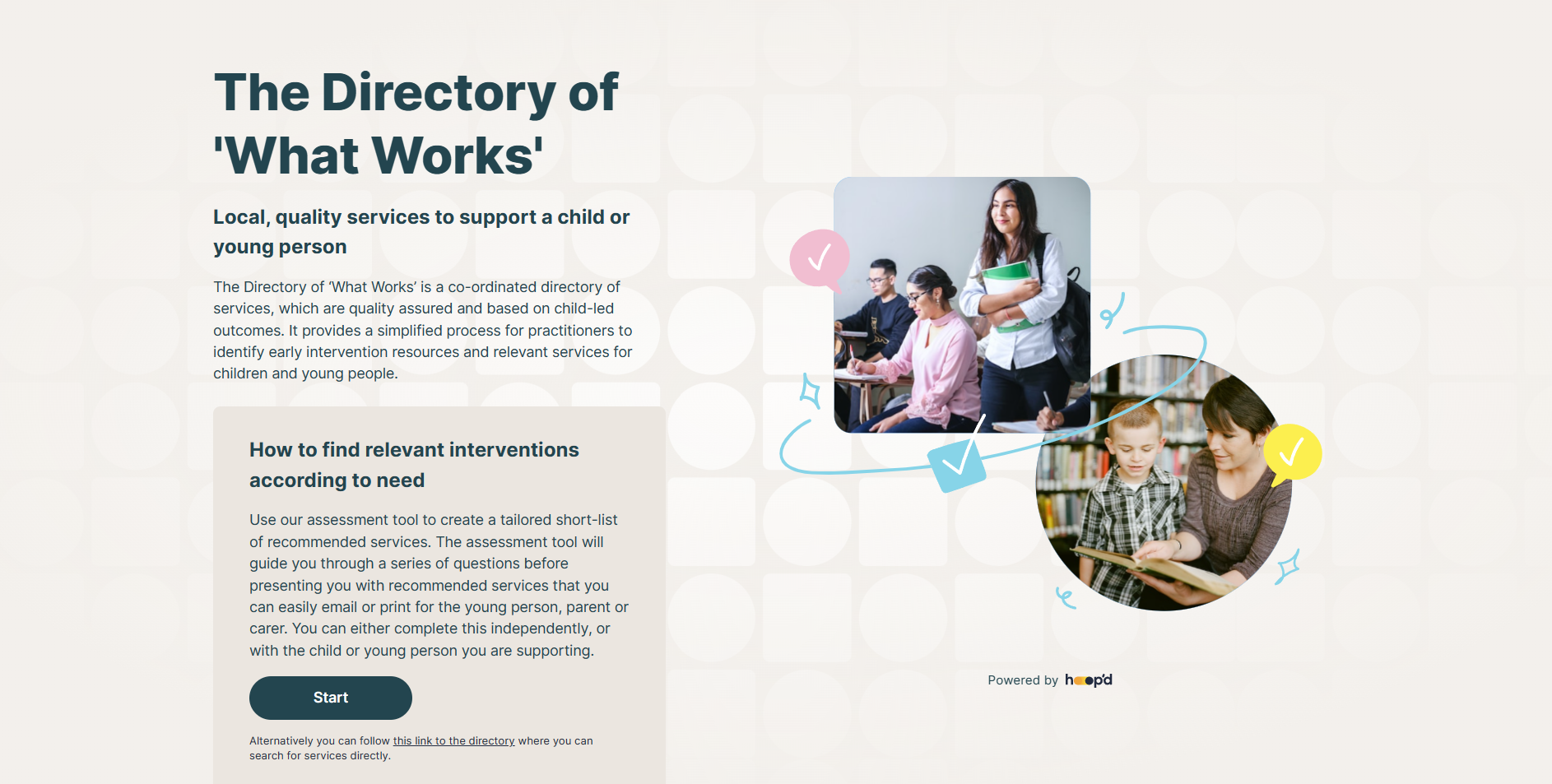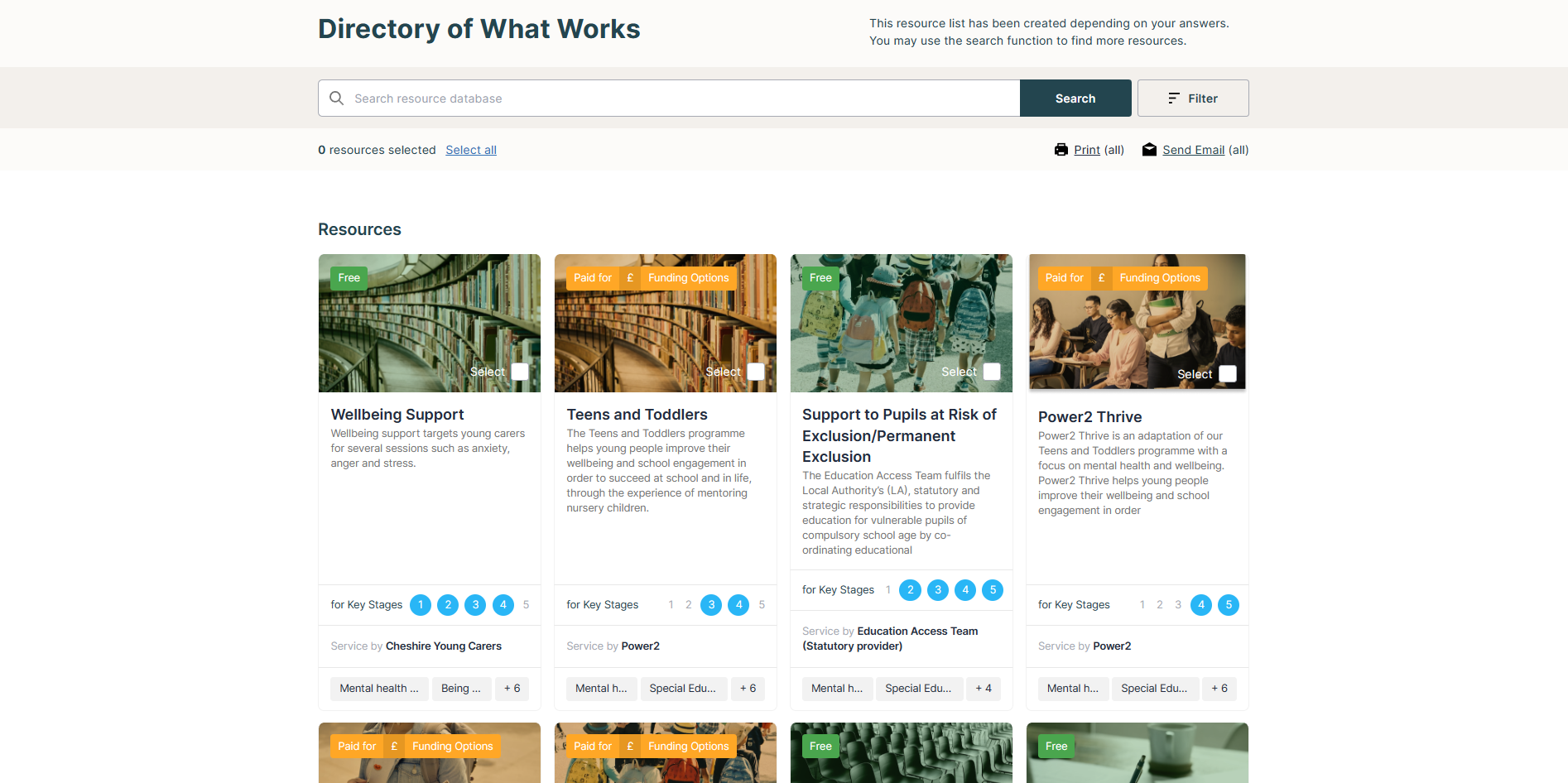Supporting Young People
Introduction
Assessing needs in educational environments is highly challenging. The impact the right form of engagement can have at the right time in a young person's life therefore carries with it tremendous long-term value.
Our work supporting Social Finance has involved building the knowledge and capacity of educational professionals, giving them access to a tool capable of supporting them in their work, and addressing systemic problems in the identification, assessment and referral methods for young people most at risk of exclusion.
The problem
There are two very common problems associated with conducting needs assessments. Firstly it can take a long time to effectively ascertain an individuals needs. Educational proffesionals in particular are time poor. Secondly it is not always clear how and whom to make a referral to. The process of identifying a suitable resource, service or intervention is also a time consuming challenge, perhaps even more so than the original assessment. Interventions might not be known, and if they are methods of referral are often highly varied and again time consuming to pursue.
How do we deliver a quick and effective needs assessment of a young person at risk of exclusion? How do we make the process of responding to that assessment easier and more relevant to the needs of the young person in question?
Our solution
A tailored combination of our Triage Tool together with a set of Hoop'd directory management modules were created for Social Finance's Directory of What Works; a triage tool for assessing the needs of young people and referring them to the most appropriate local services.
The Directory of What Works provides teachers with an environment for conducting quick and simple assessments, so as to highlight to them the most appropriate services to refer. The Hoop'd directory provides the teachers with a method of selecting recommended services and referring them easily to young people, their families or carers via printed or emailed information.

How we worked with our partners
We worked with the Social Finance team to understand the needs and requirements of the educational professionals they were engaged with in Cheshire and Gloucestershire before creating the Scope of Work for the design and implementation of the Directory of What Works. The sensitivities around language concerning the needs of young people at risk of exclusion are high and very nuanced and great care was taken in order to make the triage process quick and simple but also respectful of the challenging nature of the questions being posed. The classifications and standardisations in some of these areas are very fluid so a dynamic and flexible system of categorising and tagging directory resources was required.
The result is a tool that is currently being tested in educational environments in both Cheshire and Gloucestershire to ascertain the impact early identification and early preventative measures can have in positively reducing the incidence of young people being impacted by school exclusion.

What is next
A new dataset generated by the directory is able to indicate the prevalence of different search and referral criteria being utilised by users of the tool and part of assessing the success of such a tool will be how this data can be meaningfully applied to help support local authorities and their service partners in refining referal pathways and in reaching young people at risk of exclusion.
If you are interested in applying new methods to how you identify and assess members of your community, or want to learn more about the design and implementation of early identification and prevention services then please get in touch.